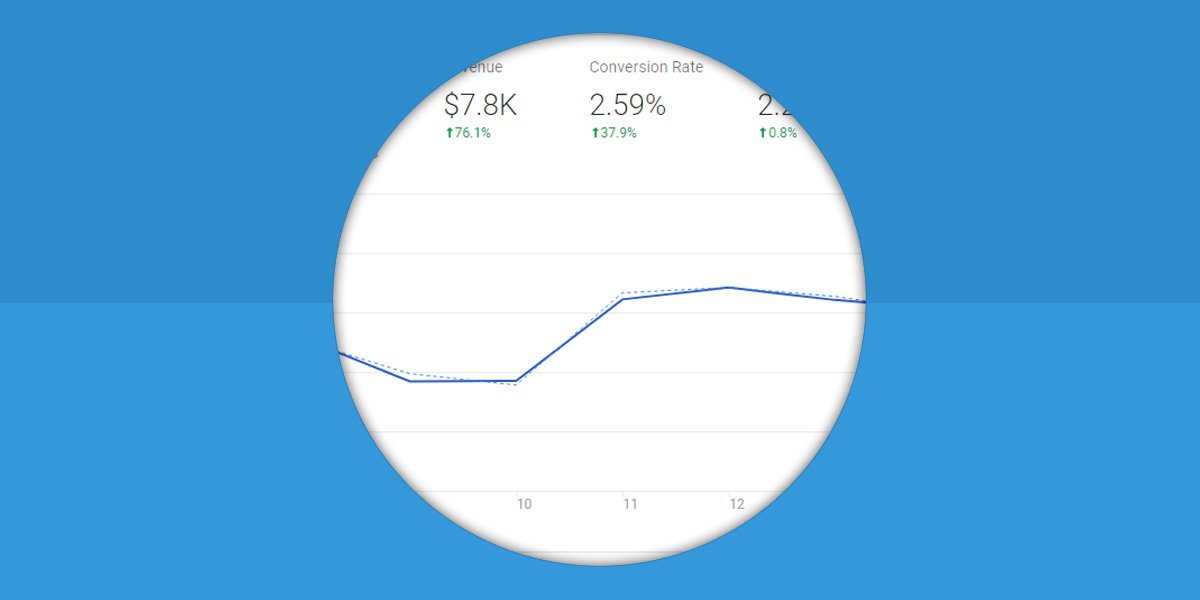Are you using Google Analytics?
Don’t know how it works or how to read it?
Google Analytics is a tool with a wide variety of features for website tracking. But, even this simple description doesn’t do the tool enough justice.
To understand the power of Google Analytics, let’s examine its various uses and why you need to get on board with tracking your website.
The Google Analytics Basics: Traffic Tracking
First off, install Google Analytics if you haven’t.
Operating blindly (no data) is a down-right travesty for your business opportunity.
Got it installed? Good…
At its core, Google Analytics is widely used for its ability to track website traffic.
Such stats provided that are particularly important include:
- Overall visits
- Pageviews
- Average time on site
- Bounce rate
Other details such as the entrance/exit sources, geolocation, computer specs, language, and behavior are additional informational elements that make this tool incredibly powerful when operating a business or campaign.
How does this affect my business?

Let’s take a look at what each item represents and how you can use this information to better your work.
Visits/unique visitors
Although this number doesn’t determine your profitability, it’s still important to understand to see the growth of your website. Additionally, traffic stats can be used when you approach potential advertisers or networks that seek websites with reputable amounts of traffic.
Pageviews
This details how many web pages your visitors are browsing through; the higher, the better. On average, people generally scan through a single page but you can use this statistic as a baseline for implementing ways to increase the number of pages your visitors are viewing such as adding related posts sections, internal linking, or any other trick to get your visitors digging deeper into the website.
Avg. time on site
A website with incredible web traffic but very little time on site shares one thing: people land on the site and immediately leave; this is no good for conversions. The time your visitors spend on your website can be used as an indication of the content you produce. Pages that show very little site time, for visitors, indicating that the topic may not be worthwhile to your audience whereas lengthy time spent on others could show a great direction for your future content plans or campaigns.
Bounce rate
This stat shows how often your visitors leave your website; your aim is to keep this number low because it’s hinted that it may be a factor in search engine optimization (what keeps you ranking high in search engines like Google). Tracking this and applying techniques to keep people on the website longer, such as adding social features, is one of the many great elements of the Analytics tool.
Of course, this is merely the tip of what’s offered by Google Analytics. For the majority, these are the main stats that people will be tracking but there are many more for the obsessive.
Google Analytics Basics: Campaign Tracking and Conversions
Without going into the nitty-gritty and technical side, Google Analytics can be used for campaign tracking and conversions. This will reveal the process your visitors take to complete an action of your choice such as buying a product, subscribing to your list, or even just sharing your content on social media websites.
From within the tool, you can set goals and checkpoints that will be tracked.
Upon completion of these goals, you’ll be given additional stats on the conversion process.
This ability to track and work with conversions has incredible benefits for those selling products in ecommerce or if you are operating an online business.
Google Analytics Basics: Demographic Research
In part of your market research and development, you will always come across the discussion of your website’s demographics.
The demographics, in Google Analytics, aren’t entirely conclusive but they will give you a better picture of understanding the type of people visiting your website than merely guessing.
Within the demographic section of Google Analytics, you can discover such items as:
- The location from which your visitors are from (particularly helpful in determining the types of products you’ll be offering and the content direction since each culture looks for different cues).
- The language of your visitors (worthwhile to note depending on how you’re speaking to your visitors to avoid confusion using “common” terms that may not be understood abroad).
It may not seem like a lot but just these items can greatly affect your direction if you consider your business to be international.
Google Analytics Basics: Engagement and Improvements
Engagement leads to behavior targeting which leads to improvements which lead to more money.
Google Analytics can reveal how your visitors interact with your website from the locations from where they discovered your website down to which web pages are getting the most play.
The tool can be used for a variety of uses at this level:
- Discover what websites and platforms are sending you traffic so you can reach out to other website owners or focus on a particular platform in your campaigns.
- Find areas of your website where you leak the most amount of traffic so you can make changes that could potentially keep the visitor on your website longer.
- Gauge how often people come back to your website which could help aid your content production to speak to these individuals that are becoming part of the community.
- How deep visitors explore your website and at what point they lose interest.
- How your visitors interact with your content with built-in heat map tools.
The power of Google Analytics is truly powerful, even as a free service.
Business/Corporate Benefits
The managerial side of the business may not be the most thrilling part of running a company.
But, Google Analytics still plays an important role for individuals that need reports for their website.
Analytics has an API that allows for customizable reporting that can help allow senior members of a company or business to make intelligent decisions for their company future.
On a marketing level, most of these reports will generally be focused on keeping track and records of how well your campaigns are performing.
Bringing It All Together. Making It Work.
Google Analytics can be wildly addictive.
You may find yourself constantly checking your account to get up to speed on how well your website and campaign is performing.
Overall, the tool for most marketers will come down to tracking website traffic, discovering how their visitors are using their website, and market research.
Every bit of data will, when collected, allow you to compile and make an intelligent judgment about your business.
This includes what ad copy you’ll begin running or even the product you will be promoting.
Google Analytics is extremely powerful if you take the time to invest in the tool. The data pulled will give you greater insights about your marketing than you could have ever guessed.
To be in this game, you need to be on board with Google Analytics; if you’re not then you’re missing out an incredible opportunity for success.




